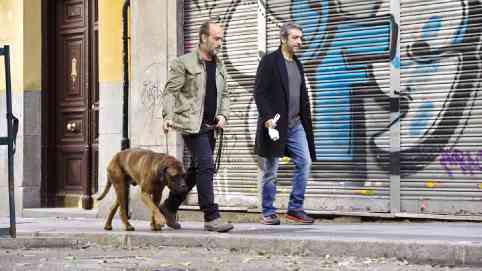Who’s afraid of subtitled movies?
There was a time in the 1990s when Spanish films, like Fernando Trueba’s “Belle Epoque” (1992) and Pedro Almodovar’s “Live Flesh” (1997), were shown in local cineplexes.
Mall giant SM even had an art-house theater that showcased the best of world cinema, including the latest works of Akira Kurosawa, Nicolas Roeg and Woody Allen.
So what happened?
That was the question posed by Carlos Madrid, director of Instituto Cervantes Manila, the organization that spearheads the Pelikula-Pelicula Manila Spanish Film Festival (ongoing at Greenbelt 3 in Makati until Oct. 16).
“We would like to think that the Pelikula-Pelicula fest gives not only the audience, but theater owners and film distributors a fine sample of Spanish films, as well,” Madrid pointed out. “We want to prove that there is life beyond Hollywood. That Filipino audiences want to watch movies other than those from the United States.”
Case in point: The South Korean film, “Train to Busan,” which premiered at this year’s Cannes fest, was a sleeper hit in local cinemas.
Filipinos need not be afraid of foreign films. It seems some theaters have this fear of showing subtitled movies,” he remarked.
Loyal following
Contrary to this prevailing perception, the Spanish fest has attracted a loyal following for the past 15 years, he noted. “Every year, there are long lines of viewers at the fest.”
He sees regular screenings of foreign films in local malls as “an opportunity for the movie business to grow and expand.”
“The Spanish fest is pulling out all the stops in promoting Spanish language films, not only from Spain, but also from Chile, Colombia, Venezuela and Argentina. In the last two years, we have been gaining ground.”

Ciro Guerra’s “El Abrazo dela Serpiente” won at Cannes, Montreal, Mar del Plata, Sundance and Rotterdam.
Luis Castaño, the Spanish ambassador to Manila, explained that the Spanish film industry remains one of the most robust in the world.
“Spanish cinema is second in Europe and seventh in the entire world, in terms of film production,” said the ambassador.
Madrid agreed: “Spanish movies earned over 160 million euros at the box office last year. It’s a booming industry, but it has also earned plaudits in international film festivals.”
A common denominator among the 18 films included in this year’s lineup is the acclaim they have received on the world stage, Madrid quipped.
For example, Cesc Gay’s “Truman,” the opening film, won best actor at the San Sebastian film fest in 2015 and swept the Goya Awards (the Spanish Oscars) in 2016.
Cesar Acevedo’s “La Tierra y la Sombra” (from Colombia) won at Cannes last year. Another Colombian film, Ciro Guerra’s “El Abrazo dela Serpiente,” won at Cannes, Montreal and Mar del Plata last year and at Sundance and Rotterdam this year.
“We make sure to present an array of films every year,” Madrid asserted. “Thrillers, love stories, dark comedies, drama movies. We even have an animated film this year: Alex Colis’ ‘La Tropa de Trapo.’”
No, it’s not about traditional politicians. “It’s a children’s movie,” Madrid clarified.
Madrid pointed out that the Spanish fest is part of Instituto Cervantes’ mission to engage “Spanish and Philippine cultures in a dialogue. Take note, culture is plural because, for us, it is defined by diversity.”
Three Filipino short films that were shown in festivals in Spain—Bor Ocampo’s “Digpaningalti,” Noel Escondo’s “Nakaw” and Elvert Bañares’ “Impas”—are part of this year’s fest.
The Spanish fest moves to the FDCP Cinematheque in Manila, from Oct. 19 to 23.

